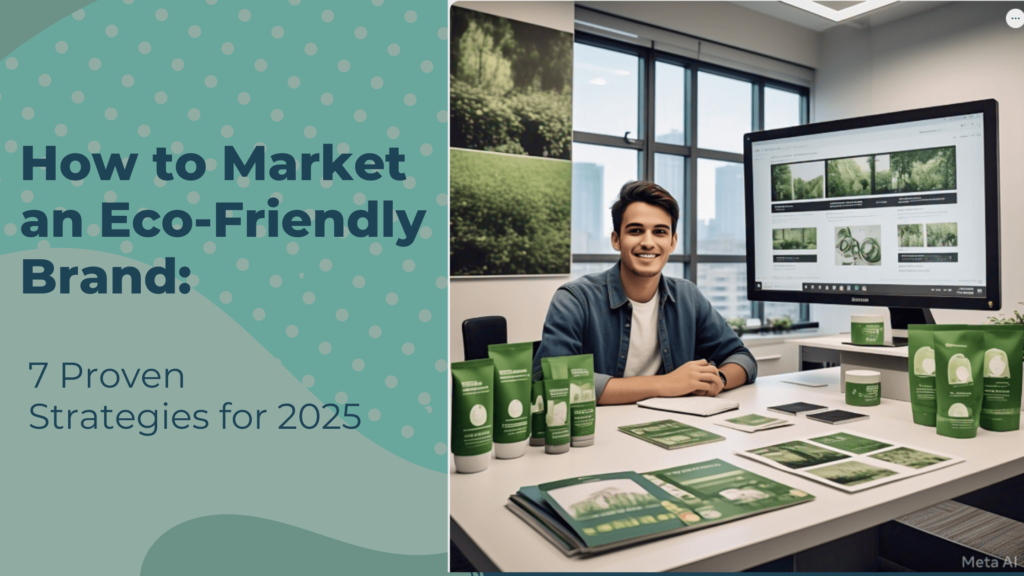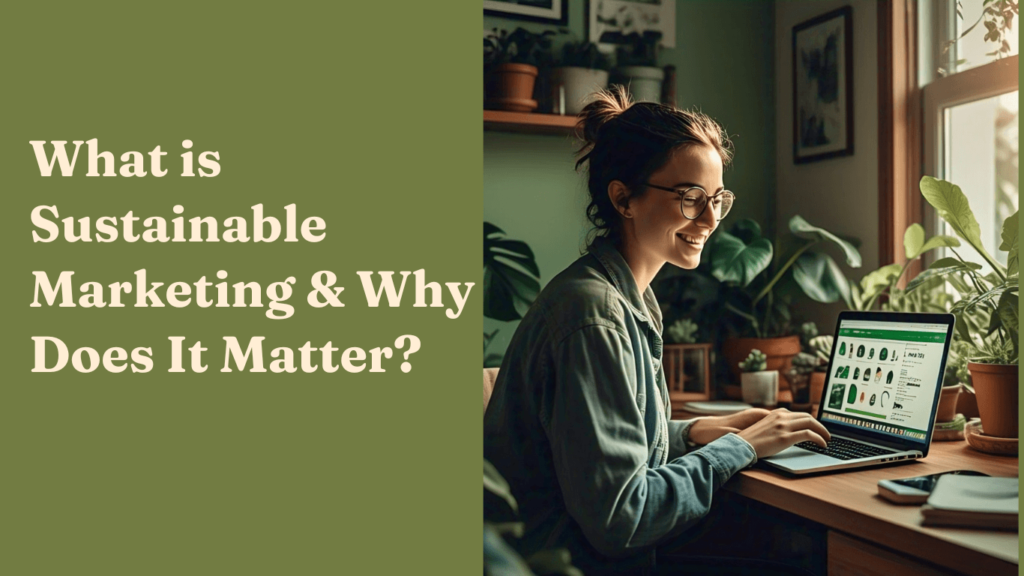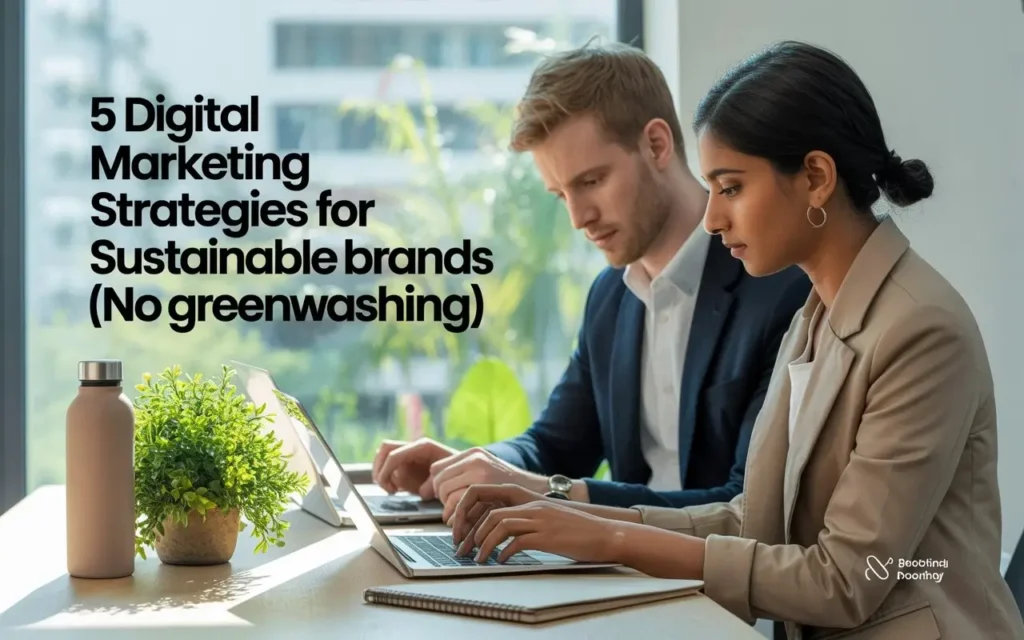
introduction
Are you a sustainable brand struggling to stand out—without sounding fake or salesy? You’re not alone.
Imagine pouring your heart into an eco-friendly product… only to be labeled as another greenwashing brand. Ouch, right? But here’s the truth: your authenticity is your biggest strength.
In today’s market, customers aren’t just looking for sustainable claims—they’re searching for transparent stories, real impact, and brands they can trust.
The solution? Digital marketing strategies tailored for sustainable businesses—strategies that amplify your purpose without misleading your audience.
In this guide, we’ll break down 5 practical digital marketing strategies that even beginners can apply to grow their brand authentically and ethically. Let’s dive in.
Table of Contents
✅ What Is Greenwashing and Why Avoid It?
✅ Why Sustainable Brands Need Authentic Marketing
✅ 5 Digital Marketing Strategies for Sustainable Brands
1️⃣ Tell Authentic Stories Through Content Marketing
2️⃣ Educate Your Audience Using SEO Blogging
3️⃣ Showcase Proof with User-Generated Content (UGC)
4️⃣ Build Trust with Influencer Collaborations
5️⃣ Engage Through Social Media Transparency
✅ Key Takeaways
✅ Final Thoughts
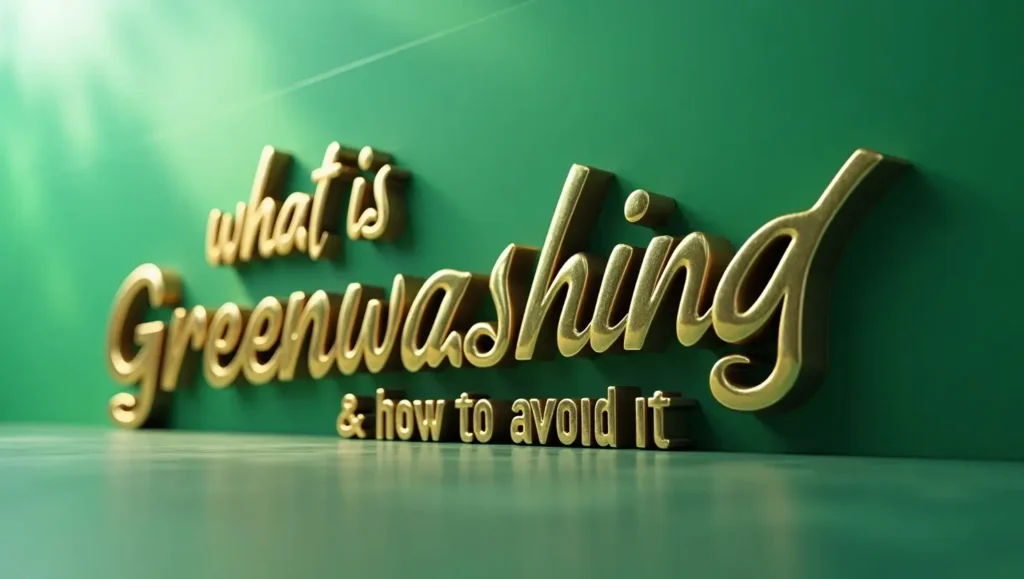
What Is Greenwashing and Why Avoid It?
Ever seen a brand claim to be “eco-friendly” just because they use green colors or words like “natural” without proof? That’s greenwashing—when companies pretend to care about the planet to attract conscious customers but don’t back it up with real action. It’s like wrapping plastic products in a “sustainable” label without changing anything meaningful.
👉 Why should you care?
Greenwashing tricks customers, damages trust, and harms truly sustainable brands working hard to make a difference.
How to Avoid Greenwashing (Real Tips for Brands & Creators)
1️⃣ Be Honest:
If your product isn’t 100% sustainable, say so. Transparency builds trust more than fake claims.
2️⃣ Show Proof:
Use certifications (like FSC, Fair Trade, or organic labels). Share behind-the-scenes photos, production processes, or genuine sustainability reports.
3️⃣ Avoid Vague Words:
Don’t just say “eco-friendly” or “natural.” Explain how your product reduces waste, saves energy, or helps the environment.
4️⃣ Share Real Stories (UGC Works!):
Encourage customers to share their experience using your sustainable product through photos or reviews. This real-world proof beats fancy marketing.
5️⃣ Educate, Don’t Oversell:
Use your platform to educate your audience about sustainability, even beyond your products.
Remember:
In today’s world, customers are smart. Greenwashing might get attention, but authenticity wins loyalty.
Be real. Be clear. Be responsible.
That’s how you grow a sustainable brand without faking it.
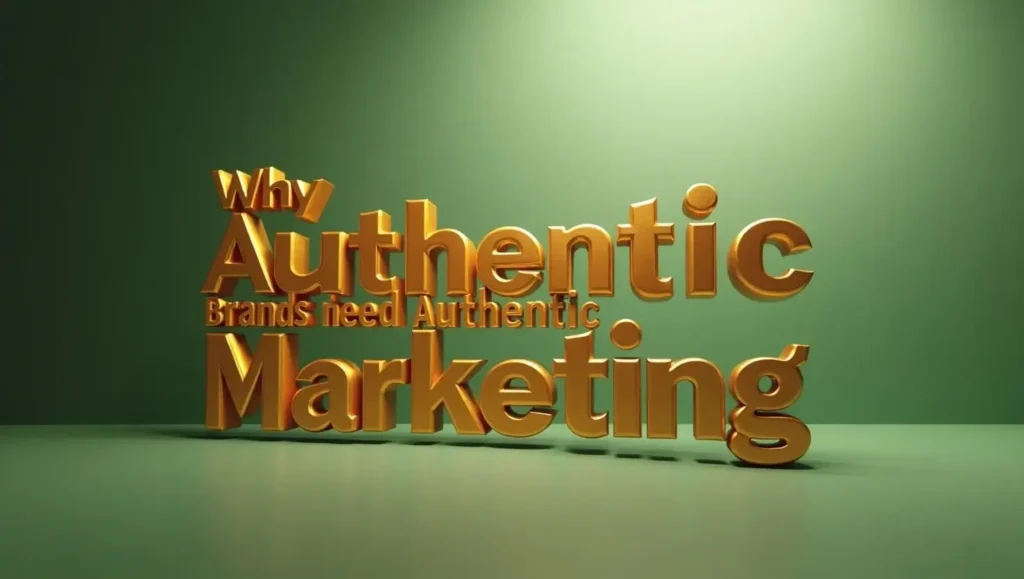
Why Sustainable Brands Need Authentic Marketing
Sustainability isn’t just a trend—it’s a promise. Today’s buyers don’t simply shop for products; they choose brands that share their values and prove their impact. In fact, 66% of global consumers (as per Nielsen’s Sustainability Report) are willing to pay more for eco-friendly products—but they’re also more cautious than ever about where their money goes.
What does that mean for your brand?
It’s simple: Authenticity isn’t optional. It’s essential.
Your marketing shouldn’t be about shouting “we’re green!” Instead, focus on showing how your brand genuinely contributes to sustainability. This could be through behind-the-scenes content, honest blog posts, or even customer-generated reviews showing real-world usage.
👉 To market authentically, your brand should:
✅ Communicate real efforts with clear, honest messaging.
✅ Build trust consistently through transparent updates.
✅ Share your impact—but avoid exaggeration or over-promising.
In today’s transparent world, people recognize empty claims. Authentic marketing helps your sustainable brand not only attract conscious customers but also turn them into loyal advocates.
Remember: Trust grows slow but lasts long. Keep it real, and your brand will too.
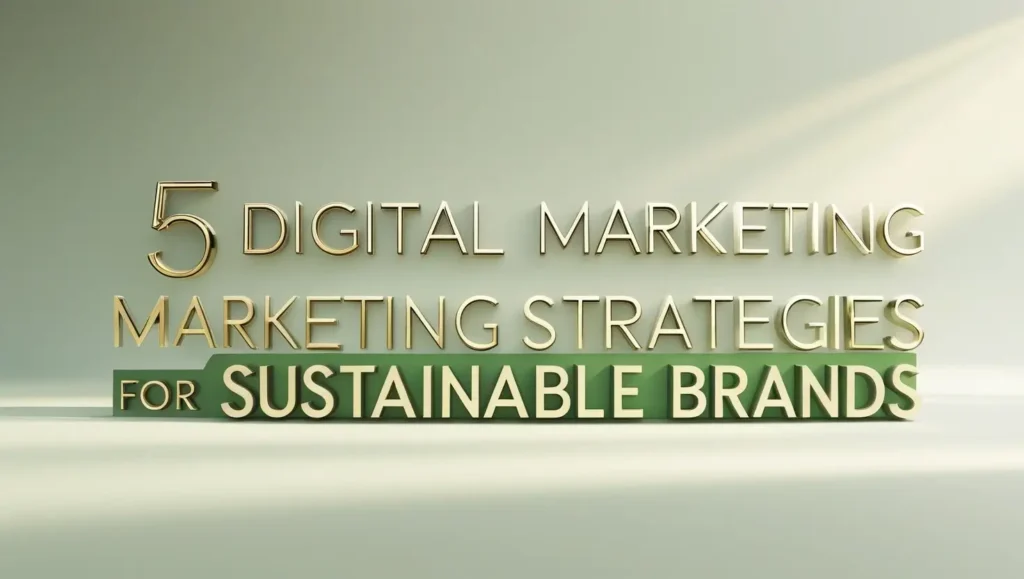
5 Digital Marketing Strategies for Sustainable Brands

1️⃣ Tell Authentic Stories Through Content Marketing
To begin with, one of the most powerful digital marketing strategies for sustainable brands is telling authentic stories. But what does this actually mean?
Instead of simply claiming that your brand is eco-friendly, you need to show people the real story behind your products and mission. Today’s customers are not just buyers; they are conscious consumers. They want to know why you started, what challenges you faced, and how your products help the planet.
For instance, imagine you sell organic cotton clothing. Rather than saying, “We are eco-friendly,” explain where your cotton comes from, who harvests it, and why this choice helps reduce environmental damage. When you tell such genuine stories, customers feel connected to your brand.
Furthermore, don’t be afraid to share your struggles. Maybe switching to biodegradable packaging took you longer than expected. Maybe sourcing ethical materials was more expensive than planned. Sharing these behind-the-scenes realities builds trust and shows that you’re truly committed to sustainability.
Now, how do you share these stories? You can use:
- Your blog to write long-form posts about your journey.
- Videos to show real-time production processes.
- Social media captions to share small day-to-day stories.
Remember, using real photos instead of stock images adds to your authenticity. Adding interviews with your team, customer testimonials, or even photos from your supply chain can make your content more believable.
To make your stories even more engaging:
- Use first-person language like “We believe…” or “Our journey started when…”
- Include emotional words to make your audience feel connected.
- Always explain how your efforts help the environment or local communities.
In addition, ensure your website and blog follow SEO best practices, like using headings, bullet points, and keywords such as “sustainable brand story,” “eco-friendly business journey,” and “authentic green marketing.”
In conclusion, by sharing honest stories, your brand stands out from competitors who rely on vague green claims. You’ll connect with your audience, earn their trust, and grow your brand the right way.

2️⃣Educate Your Audience Using SEO Blogging
Another critical strategy that sustainable brands must not ignore is educating your audience through SEO blogging. Why? Because customers love brands that teach them something valuable, not just those that try to sell products.
To explain, blogging allows you to create helpful content that solves problems for your readers. For example, if you sell bamboo toothbrushes, you can write blog posts like:
✅“5 Benefits of Switching to Bamboo Toothbrushes”
✅“How Plastic Waste Affects Our Oceans”
✅“Simple Steps to Start a Zero-Waste Bathroom Routine”
Each of these topics educates readers while subtly promoting your product. Over time, this builds your brand’s authority.
But how do you ensure people find your blogs? That’s where SEO (Search Engine Optimization) comes in.
Here’s a simple SEO blogging strategy:
- Research long-tail keywords. Use free tools like Ubersuggest or Google Keyword Planner to find terms your audience searches for, such as “eco-friendly home tips” or “sustainable fashion guide.”
- Write blogs answering these queries. Focus on solving problems rather than selling.
- Use SEO best practices:
✅Include your keyword in the title.
✅Add relevant headings and subheadings (H2, H3).
✅Optimize meta descriptions.
✅Add images with descriptive alt text.
Additionally, always link to your product pages where it feels natural. For instance, after discussing the importance of reducing plastic waste, mention how your bamboo toothbrush helps and link to the product.
One key reason why blogging works is that Google rewards helpful content. The more valuable your blog is, the higher it ranks on search results, bringing organic traffic to your site.
Moreover, blogs give you endless content for social media. You can repurpose blog tips into Instagram posts, LinkedIn articles, or Pinterest infographics.
In short, educational blogging helps you:
✅Build authority in your niche.
✅Drive free traffic via search engines.
✅Educate customers while softly promoting your products.
In conclusion, when done consistently, SEO blogging is a long-term growth strategy for sustainable brands that want to educate customers and earn their trust.

3️⃣ Showcase Proof with User-Generated Content (UGC)
Next up, let’s talk about one of the easiest yet most powerful marketing strategies: User-Generated Content (UGC). In simple terms, UGC is any content created by your customers—whether it’s photos, videos, reviews, or social media posts featuring your products.
Why does UGC matter? Because people trust real customers more than brand advertising. Seeing someone else happily using your sustainable product creates social proof, encouraging others to buy.
Here’s how to use UGC effectively:
✅ Ask customers to share their experiences. Encourage them to post pictures of your product and tag your brand.
✅ Create a unique hashtag. For instance, if your brand is “EcoSoul,” create a hashtag like #MyEcoSoulStory.
✅ Run photo contests. Offer small rewards for customers who share the best images using your products.
✅ Repost UGC on your social channels. Always credit the original poster.
For example, let’s say you sell reusable shopping bags. If a customer posts a photo of themselves using your bag at a farmers’ market, repost that image with their permission. It shows real people using your product, which builds authenticity.
Besides Instagram and Facebook, don’t forget to feature UGC on your website. Many brands add UGC sections on their homepage or product pages, which improves credibility and conversions.
Additionally, you can use customer reviews as UGC. Display them prominently on your website and in email newsletters.
A common question is: How do I encourage UGC if my customer base is small? Start by reaching out personally to your early customers, explaining how much their feedback means to your brand. Offer simple incentives like discounts for sharing their photos.
In summary, User-Generated Content acts as digital word-of-mouth. It’s proof that your sustainable products deliver real value. Over time, UGC builds community and trust, turning your customers into brand ambassadors.
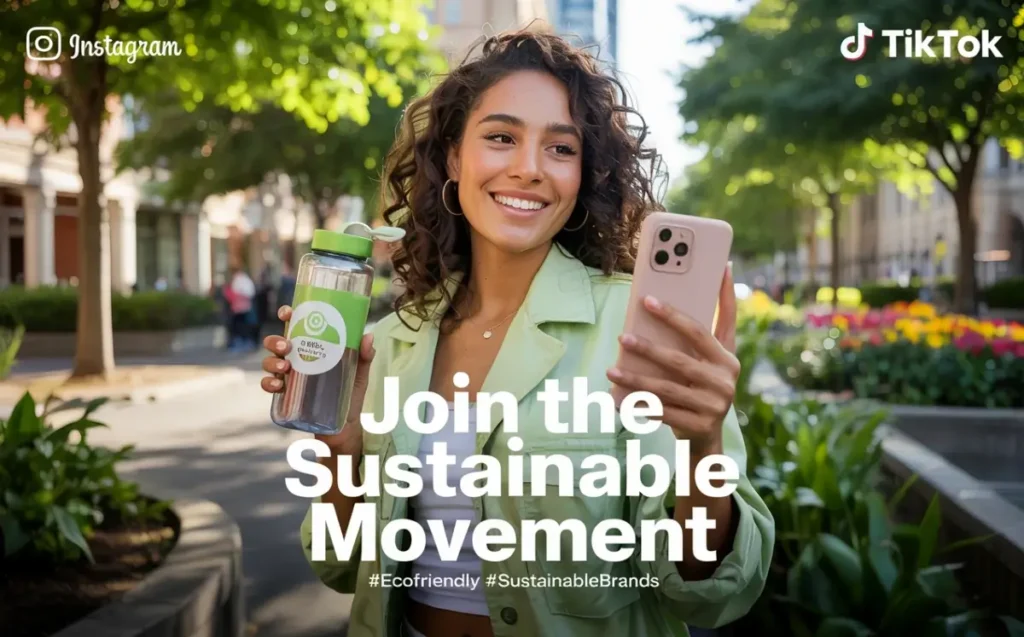
4️⃣ Build Trust with Influencer Collaborations
Another excellent strategy sustainable brands should embrace is influencer collaborations. But this doesn’t mean working with just any influencer. Focus on partnering with eco-conscious micro-influencers who truly care about sustainability.
Here’s why influencer collaborations work:
✅ Influencers have loyal audiences who trust their recommendations.
✅ When an influencer genuinely supports your brand, their followers listen.
✅ It allows you to reach new audiences without heavy advertising.
Now, how do you do this effectively?
- Choose the right influencers. Look for creators who talk about eco-living, zero-waste lifestyles, or ethical fashion. Platforms like Heepsy and Upfluence can help you find them.
- Focus on micro-influencers. Those with 10,000 to 50,000 followers tend to have better engagement and a more personal connection with their audience.
- Prioritize authentic collaborations. Instead of pushing them to sell your product, invite them to share their honest experience. Ask them to talk about your brand story, sustainability efforts, or how your product fits their lifestyle.
For instance, if you sell eco-friendly candles, send a free sample to a sustainable living influencer and ask them to share how they use it in their daily relaxation routine.
Furthermore, diversify your content formats:
✅ Instagram reels and stories.
✅ YouTube reviews or unboxings.
✅ Blog features on their websites.
Always remember to:
✅ Provide creative freedom to influencers.
✅ Avoid overly scripted promotions, as audiences sense inauthenticity.
In addition, track the performance of each collaboration. Use UTM links to measure website traffic and sales generated through influencer posts.
To sum up, working with influencers is not about making quick sales—it’s about building relationships and expanding your brand reach organically. Collaborations rooted in shared values lead to long-term brand growth and credibility.

5️⃣ Engage Through Social Media Transparency
Finally, let’s discuss a strategy that every sustainable brand should prioritize: Social Media Transparency.
In today’s digital world, customers crave honesty. They want to know:
✅ How your products are made.
✅ Who makes them.
✅ What challenges you face in your sustainability journey.
Therefore, use your social media platforms not just to promote but to educate and engage transparently.
Here’s how:
✅ Share behind-the-scenes content. Show your manufacturing processes, team members, or even the farms where your materials come from.
✅ Admit your challenges. If you’re struggling to switch to plastic-free packaging, share that story. Customers appreciate honesty.
✅ Celebrate small wins. Even small improvements in your process are worth sharing.
Moreover, make use of different platforms:
✅ Use Instagram Stories and Reels for quick updates.
✅ Post longer thought pieces on LinkedIn.
✅ Share helpful infographics on Pinterest.
✅ Create fun, educational videos for TikTok.
Engage consistently by:
✅ Responding to customer questions openly.
✅ Thanking customers for feedback—even if it’s negative.
✅ Hosting Q&A sessions about your sustainability practices.
Additionally, don’t shy away from showing your company culture. Highlight your employees, their efforts, and what sustainability means to them.
A brand that does this well is Who Gives A Crap, a toilet paper company. Their Instagram feed balances humor with transparency, discussing both their environmental goals and production realities.
In conclusion, by being transparent and authentic on social media, you’ll build a loyal audience that trusts and advocates for your brand. Over time, transparency becomes not just a strategy—but your brand’s reputation.
Key Takeaways
Strategy | Why It Works |
Content Storytelling | Builds emotional connection |
SEO Blogging | Drives organic website traffic |
User-Generated Content | Provides authentic social proof |
Influencer Collaborations | Expands reach with credibility |
Social Media Transparency | Fosters trust and brand loyalty |
Final Thoughts: Growing Sustainably Without Greenwashing
Growing your sustainable brand doesn’t require fake claims or glossy marketing gimmicks.
Instead, focus on being real. Share your journey. Teach your audience. Let your customers become your advocates.
To recap:
✅ Be transparent.
✅ Educate consistently.
✅ Celebrate your customers.
Digital marketing, when done authentically, becomes more than a strategy—it becomes a movement your brand leads.
Ready to grow your sustainable brand ethically? Start with storytelling and watch your impact multiply.
FAQ Section
Q1. How can small sustainable brands compete with big corporations?
Focus on storytelling, transparency, and community building. Authenticity often beats big-budget marketing.
Q2. What are some examples of greenwashing to avoid?
Vague claims like “eco-friendly” without proof, irrelevant certifications, or overstated benefits.
Q3. How often should I post blogs or social media content?
Aim for 1–2 blog posts per month and 3–4 social media posts per week for consistency.
Q4. What’s the best social media platform for sustainable brands?
Instagram and TikTok are visual platforms great for eco-brands, but LinkedIn works well for B2B sustainable brands.
Need Help?
If all this feels overwhelming, consider working with a digital marketing expert specialising in sustainable brands—like Ishwave Media (that’s us!).
We help purpose-driven businesses grow without compromising their values.

